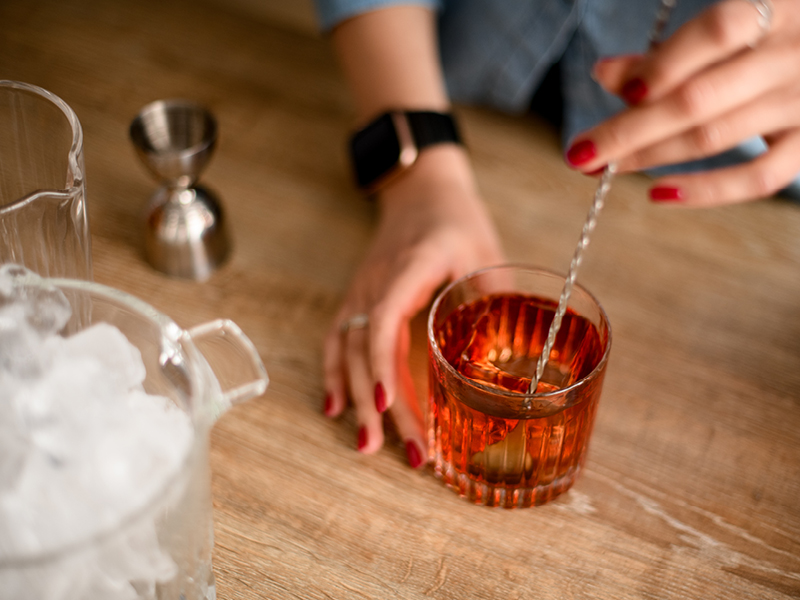
Long Read: The new language of spirits
As the spirits sector negotiates new drinking habits and different generational needs, there’s been much talk about how brand design has had to change. But what about the words? Jamie Thorp, writer at verbal branding agency Reed Words, looks at how the language of spirits is evolving, too.
The spirits sector has exploded over the past decade or so. As big heritage brands diversify their portfolios to stay relevant, new distilleries pop up every day hoping to make their mark. And it’s not slowing down: according to Statista, the global market is expected to grow by over 7% over the next three years, worth almost £409bn in 2022 alone.
As the shelf gets more crowded, brands try hard to stand out: ornate bottles, off-centre labels, unusual colourways, etching and embossment – you’ve seen it.
It’s easy to overlook the power of words when it comes to carving out market share and making a brand’s presence felt. Here’s a snapshot of how the worlds – and words – of vodka, whisky, gin and rum are being reimagined.
Vodka: embracing its warmth
Vodka used to bring two things to mind: potatoes and Russia. It was an old, cold category, distilled on estates with unpronounceable names, and poured into blue, frosted bottles.
But vodka is warming up. As we’re seeing in places like the USA and Australia, producers are using their abundant wheat fields to get a piece of the action. Innovative grain types have entered the scene; and with that comes a new world of flavour and a fresh vocabulary. Vodka is no longer simply ‘clean’ or ‘smooth’. It can be ‘buttery’, ‘spicy’, and ‘sharp’. It can have a ‘rye tingle’, or ‘linger like caramel’. As well as ditching the cold look, brands like Grainshaker and Tito’s are taking their consumers on a journey from field to bottle, with language that captures the character of the liquid and the land it comes from.
The message is clear. Vodka is no longer just for beefing up cocktails or hiding in lemonade. It’s got its own attitude and sense of purpose. The more we see – and hear – of that, the better.
Gin: using craft as a crutch
The language of gin has become elevated almost to the point of parody. Every leaf and berry is picked by expert hands, crafted with passion and skill, and distilled with meticulous detail. But it’s starting to ring hollow. There’s a spiral of brands trying to out-craft each other, and there’s only so far you can go before it becomes absurd. If everyone is saying the same thing, no one’s succeeding. And with 820 gin distilleries in the UK (up from 190 in 2015), it’s easy for words to get lost.
Refreshingly, some brands are taking a stand. East London Liquor Company looks the category in the eye and calls out its ‘bathtub bullshit’. Scapegrace brings an original twist to its product descriptions, making the gin with ‘water hurled down New Zealand’s Southern Alps’, and describing the distillation process as ‘a maze with only one exit’.
Authenticity is key, here. The art of gin-making offers so much room for variety and innovation. Why dilute it with generic, over-the-top language? Of the two brands mentioned, neither of them use the word craft. But it’s still clear how much effort they put into making their gin the best it can be.
Whisky: breaking with tradition
The way whisky is made has stayed consistent for centuries. But times and tastes are changing. The classic notes of vanilla, peat and oak have become default, and younger generations are thirsty for fresh ideas. Now, this super-traditional category is becoming more experimental as it sets its sights on adventurous new drinkers. We’re seeing whisky infused with notes from wine and beer barrels, rested in non-traditional woods, left to age out at sea or in deserts or up mountains. With this comes a vocabulary the market hasn’t seen before, but no one is really living up to the storytelling potential.
The visual cues of stags, scenery and signatures are beginning to fade out. But until the language reflects the real innovation in the sector, whisky will struggle to engage its next generation of drinkers.
Rum: discovering land
Rum is ditching the pirates and throwing the cola overboard. From Jamaica to the Seychelles, it’s going back to the land, the cane and the soil. It’s a field day for copywriters, with bold flavour notes like ‘fermented banana’, ‘meatiness’ and ‘funk’. It’s getting serious about its provenance, with wine words like ‘terroir’ entering the lexicon.
Rum is finally taking on a more luxurious persona, and there’s the challenge – bringing that sophistication to the surface without refining all the character out of it. Duppy Share is a premium rum named after mischievous spirits from Caribbean folklore. It’s part of a growing wave of rums whose stories and credibility are grounded in a place, as opposed to a general notion of the ocean. Soon, the captains and krakens of the category will have to shout if they want to be heard.
Final word: writing spirit
As consumers demand more choice and variety, they rely on good design to catch their eye, and good words to capture their imagination. It’s only by amplifying brands through storytelling and voice that they will resonate and connect with consumers in the long term.
Keywords:
- new
- Spirits
- it’s
- sector
- market
- brands
- over
- words
- three years
- spirits sector
- language
- ornate
- over 7%
- shelf gets
- 7% over
- three years worth
- reed words looks
- heritage brands diversify
- relevant new distilleries
- new distilleries pop





